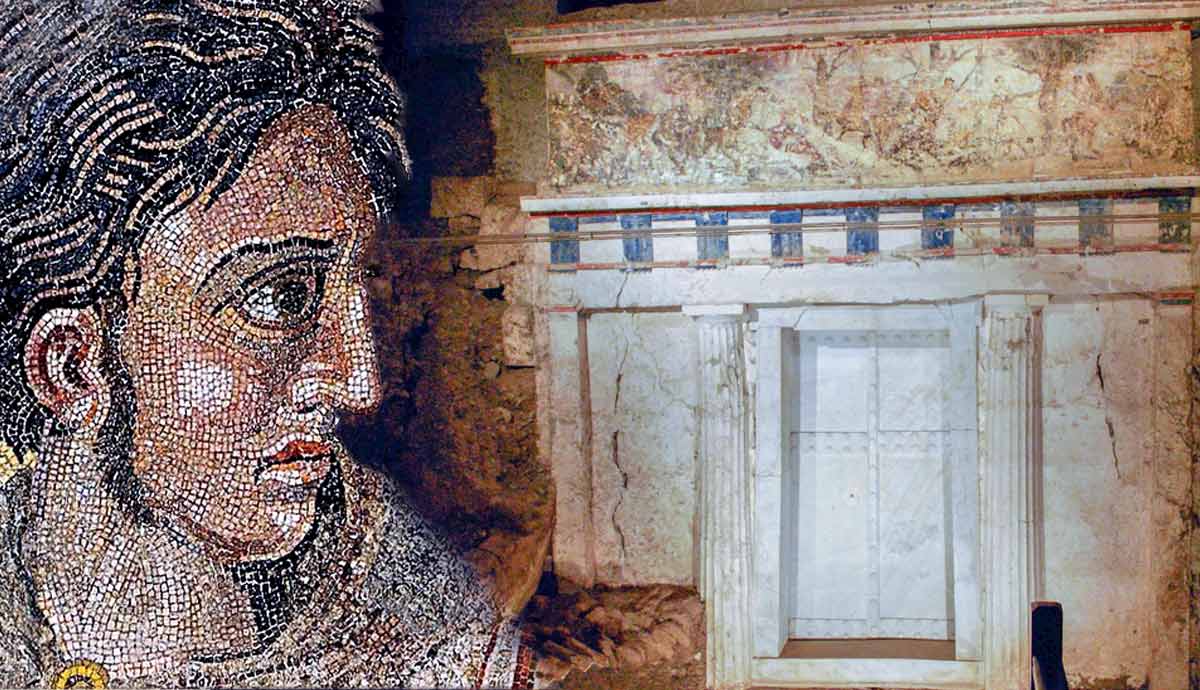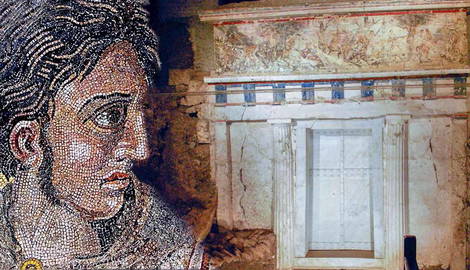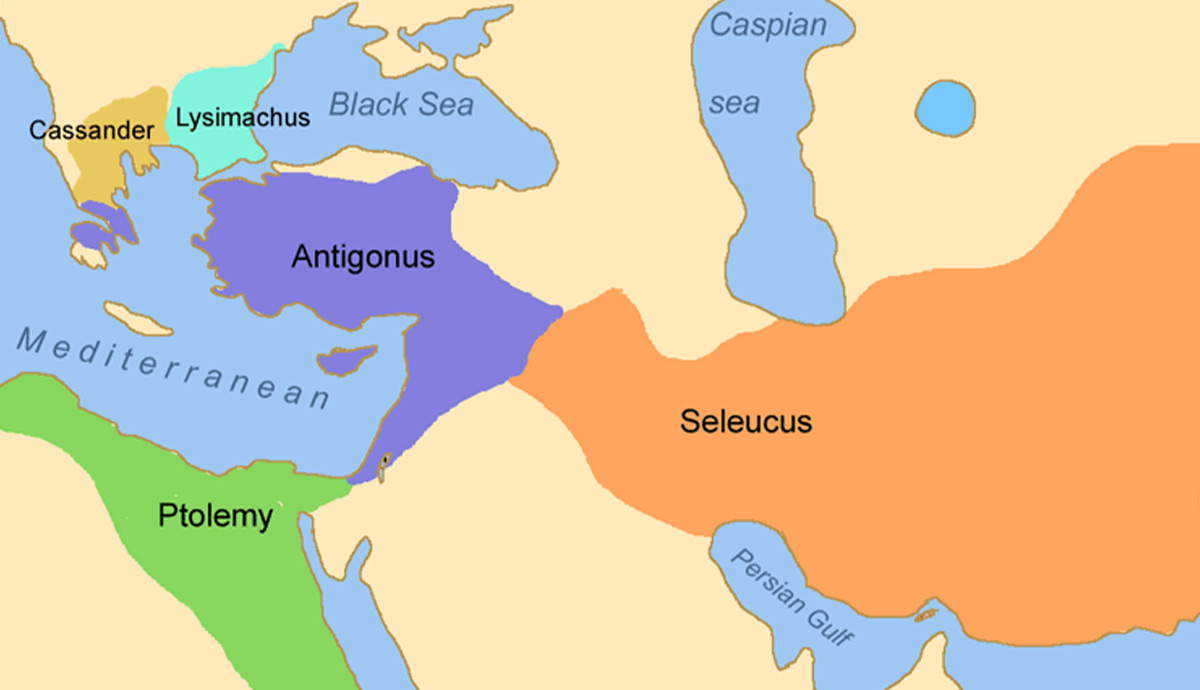
summary
- Alexander the Great’s tomb, considered a “Holy Grail” of archaeology, vanished from the historical records in the 4th century CE.
- His body was initially taken to Egypt by Ptolemy Soter, placed in a temporary tomb in Memphis, possibly Nectanebo II’s temple.
- Alexander was later moved to Alexandria, interred in the Soma mausoleum and cult center.
- Alexander’s body and tomb disappeared when the Theodosian Decrees saw all pagan temples closed.
When Alexander the Great died in 323 BCE at the young age of 32, it appears he had given little thought to what might happen to his empire or his body after his death. It was the Ptolemies of Egypt who acquired his body and built him a tomb in Alexandria, which became a landmark of the city for centuries. However, the conqueror’s tomb mysteriously vanished from the historical record. The quest to rediscover it has possessed countless people ever since.
The Death of Alexander the Great

Following Alexander’s death, his powerful friends scrambled over the scraps of his empire. Eventually, they would tear it apart through decades of civil conflict and forge new kingdoms. One of those friends was Ptolemy Soter, who was granted control of Egypt. He established the Ptolemaic Dynasty, which would stand until Cleopatra’s fatal alliance with Mark Anthony almost 300 years later.
Alexander’s successor, Perdiccas, chose to send Alexander’s body back to Macedon, but it never arrived. His funeral train departed Babylon in 321 BCE, but Ptolemy’s forces appropriated the body in Syria and redirected it to Egypt.
Alexander’s Forgotten Memphite Tomb

When Ptolemy stole Alexander’s body, Alexandria was still being constructed, and Ptolemy was ruling from Memphis, where Alexander was placed inside a temporary tomb. In the 19th century, archaeologists located a temple of the Pharaoh Nectanebo II near the Serapeum of Saqqara. He was the last native pharaoh of Egypt, who vanished after the Persian invasion in 340 BCE. Archaeologists have proposed that this temple of Nectanebo was repurposed as Alexander’s temporary tomb.
Located near Ptolemy’s seat of power, the temple would only have been a few decades old when Ptolemy was searching for a burial place, and it was probably the most recent major non-Persian monument in Egypt. There was also an unused royal sarcophagus prepared for Nectanebo II, perfect for a king. The discovery of statues dating from Ptolemy I’s reign in the vicinity of the temple confirms that some royal attention was paid to this site at this time.
Interestingly, an apocryphal ancient story claimed that Nectanebo fled to Macedon and was Alexander’s true father. Alexander was already born before Nectanebo fled Egypt, but the story might have emerged because of Alexander’s burial in the former’s tomb.
The Soma

After several years in Memphis, Alexander was moved to Alexandria by Ptolemy II Philadelphus (ruled 282-246 BCE). This second temporary tomb is lost, and we know nothing about it except that it existed. It was Ptolemy IV Philopator (ruled 221-204 BCE) who completed Alexander’s third and most famous tomb, called the Soma.
The Soma was a mausoleum built to house both Alexander and the Ptolemaic royal family. Ancient sources place it at the crossroads between the city’s main north-south and east-west roads. The tomb served as a cult center of the deified Alexander through the three centuries of Ptolemaic rule. Later, as the power of the Ptolemies declined, they pillaged the tomb for gold and treasures that could be melted down or sold to meet their needs.
Julius Caesar visited the tomb in 48 BCE. Later, Cleopatra stripped the tomb of many of its remaining treasures to raise money for her and Mark Anthony’s doomed war effort against Octavian. After his victory, Octavian himself visited the tomb to pay tribute to Alexander. When asked if he wished to see the bodies of the Ptolemaic kings as well, Octavian reportedly replied, “I came to see a king, not corpses.”
The Vanishing Tomb

The Soma was one of Alexandria’s most famous landmarks, making its disappearance peculiar. The last recorded visit to the tomb was by the Roman emperor Caracalla in 215 CE. He ordered some of the burial goods to be removed, but supposedly compensated the site with new gifts.
The writer Libanius offers our final mention of Alexander’s mummy still being on display just before 390 CE. The timeline of this final mention aligns with the Theodosian Decrees between 389 and 391, in which the Emperor Theodosius ordered the closure of pagan temples across the empire. The tomb, being a cult center for the deified king, must have run afoul of these laws. Saint Cyril of Alexandria mentions that the cult centers of Alexander were stripped of their treasures on Theodosius’ orders, although the tomb is not directly mentioned.
By the early 400s CE, Saint John Chrysostom wrote that the locations of the body and tomb of Alexander had been lost.
The Trouble with Tomb-Hunting

The hunt for Alexander’s tomb poses many challenges. Alexandria is a bustling inhabited city, making it impossible to excavate most of the area. The continual inhabitation of Alexandria also raises the possibility that the tomb has simply been destroyed and that there is nothing left to be found. Land subsidence and changing sea levels have also flooded many old areas of the city, potentially leaving the tomb underwater.
There is also the question of whether Alexander’s mummy will be found with his famous tomb. It was common for royal Egyptian bodies to be moved long after their interment, so there is a chance that Alexander was taken out of the Soma and reburied elsewhere.
Searching in Alexandria

The obvious starting point for discovering the Soma is to find the old crossroads of Alexandria in the modern city, the layout of which is very different. Excavations under the authority of Mahmoud Bey in 1895 provided some insight into the old layout and placed the crossroads somewhere in the vicinity of the intersection of the modern El-Horeya and Nebi Daniel roads. This conclusion is strongly supported by local traditions, which assert that the tomb was somewhere nearby.
While no reliable evidence of the actual tomb exists past the 4th century, several later writers claimed that the tomb of Alexander still existed in the city without further details. It is possible that local memory preserved the approximate location of Alexander’s tomb, and, over time, various locations claimed an association with the site.
The Nebi Daniel Mosque is one such claimant. Sitting barely 100 meters from the Horeya-Nebi Daniel intersection, the mosque has long claimed to be atop Alexander’s tomb. In 1850, Heinrich Schliemann, who would earn fame for his work on the site of Troy, unsuccessfully sought permission to excavate there to settle the matter. Modern scholars, such as Professor Faouzi Fakharani, have studied the mosque and rejected its claims to being the site of the lost Soma, but agree that the claim probably reflects a genuine historical memory of the tomb’s existence nearby.

Just 300 meters away from the Nebi Daniel Mosque stands the Attarine Mosque, another historic claimant for the site of Alexander’s burial. These claims were compelling enough to attract the interest of Napoleon’s French archaeologists in 1795.
The French did not locate the tomb or Alexander there, but they did find an old sarcophagus, repurposed by the mosque as a ritual bath. However, without the knowledge to read hieroglyphs, they dismissed it as little more than an old Egyptian curiosity. The British acquired the sarcophagus after defeating Napoleon in Egypt and eventually deciphered the hieroglyphs. The sarcophagus belonged to Nectanebo II.

Mere coincidence seems an insufficient explanation for how the Attarine Mosque, located in the right area of Alexandria, correctly linked this sarcophagus, out of the thousands in Egypt, with Alexander’s burial. While it was not the Soma, this again supports that the ancient tomb was located in the vicinity.
Siwa & Aigai

Other researchers have followed the supposition that Alexander’s body was moved and suggested that his remains might be found elsewhere.
One suggested alternative is the Siwa Oasis, where Alexander was declared the son of Zeus-Ammon by the god’s oracle. However, none of our sources suggest a Siwa tomb, and there is no compelling archaeological evidence. Claims – such as in 2021 by the Greek amateur archaeologist Liana Souvaltzi – have all been debunked and smell like tourist trapping.

Others suggest that Alexander was eventually returned to his homeland and reburied in Macedonia. There was much excitement when the ancient site of Aigai (modern-day Vergina) in 1977. Artifacts dating to the period of Alexander’s life fueled speculation that the conqueror had gone home after all. To the credit of these speculators, the tomb turned out to be the closest possible thing to Alexander’s tomb without being the real thing: that of his father Philip II. There is no evidence of a similarly grand burial prepared in the area for Alexander.
A similar flurry of excitement attended the discovery of the Kasta Tomb at Amphipolis in 2012, but neither the remains of artifacts supported identification with Alexander.
Alexander the Evangelist?

Archaeologist Andrew Chugg has spent the last few years presenting a radical theory: Alexander is in Venice under the false impression that his body is that of St Mark the Evangelist. This proposal sounds absurd on its face, but his evidence is surprisingly compelling.
St Mark is credited with writing the Gospel of Mark and was martyred in Alexandria in the 60s CE. For the first 350 years after his death, Christian sources maintained that his body had been burned and destroyed. One 4th-century text that contradicted this was later found to be a 6th-century forgery. However, in 392, the writings of St Jerome tell us that the body of St Mark was in Alexandria.
This suggests that Mark’s body somehow miraculously reappeared in Alexandria in 392, the year after the Theodosian decrees, and just after Alexander’s body disappeared in 390. This is when pagan sites were forced to close or rebrand themselves as Christian. The site of St Mark’s supposed tomb in Alexandria is around the modern St Mark’s Coptic Orthodox Cathedral, just 200 meters north of the Horeya-Nebi Daniel intersection, well within the search area for Alexander’s tomb.
Alexander in the Basilica di San Marco?

Venetian merchants famously stole the remains of St Mark in 892 by smuggling them out of Alexandria in a shipment of pork. They were taken to Venice, where a church was built to house them on the site of the modern Basilica di San Marco. Chugg’s assertion that these remains in Venice actually belong to Alexander may be supported by a curious stone relief discovered during work on the Venetian Basilica in the 1960s. The type of stone was from the Eastern Mediterranean, and the artwork upon it was Macedonian Greek, depicting a shield with the star of Alexander’s royal house and a distinctive sarissa spear wielded by Alexander’s armies.
Recent studies have concluded that it was part of a sarcophagus casing. However, its size did not match any sarcophagi in the Basilica, nor any known Macedonian artifacts. Chugg noticed that it did match one specific sarcophagus, down to a matter of millimeters: that of Nectanebo II, which was supposedly repurposed for Alexander. Chugg argues that the Venetian merchants took this part of the sarcophagus when they took Alexander’s body, thinking it was St Mark.
A Reconstruction of the Tomb and Body of Alexander the Great

Chugg’s seemingly outlandish theory is surprisingly persuasive, but also unproven. He suggests that Alexander was interred in the sarcophagus of Nectanebo II in Memphis when he was first brought to Egypt. Both man and sarcophagus were later moved to the Soma, the ruins of which lie somewhere beneath the city around the intersection of the El-Horeya and Nebi-Daniel roads. The Ptolemies also constructed a suitable casing for his sarcophagus, decorated with Macedonian symbols, that would keep it safe for over a thousand years.
Alexander’s tomb was safe for over 700 years until the Theodosian Decrees forced it to be rebranded as a Christian monument of St Mark to escape persecution by the authorities. Alexander’s body vanished at the same time and place that Mark’s appeared. Nevertheless, local memory of Alexander’s tomb being in the area also survived.
Centuries later, the Venetians stole the body, believing it was that of their patron saint, and took with them a chunk of the sarcophagus’ Ptolemaic casing. In Venice, the remains were venerated as the legitimate relics of St Mark. Back in Alexandria, the now-empty sarcophagus ended up in the Attarine Mosque, where it was correctly remembered to be part of Alexander’s burial.
While this theory could be confirmed by a re-examination of the remains, given the reluctance of the Catholic Church and the city of Venice to allow the testing that might expose the blunder mean that the debate over what happened to Alexander the Great continues.










